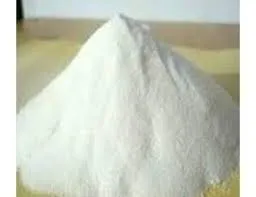
Nov . 18, 2024 21:38 Back to list
hydroxyethyl cellulose synthesis
Hydroxyethyl Cellulose Synthesis An Overview
Hydroxyethyl cellulose (HEC) is a water-soluble polymer derived from cellulose, known for its wide range of applications in various industries, including pharmaceuticals, cosmetics, and construction. It exhibits excellent properties such as thickening, gelling, binding, and surfactant characteristics, making it a versatile ingredient in many formulations. The synthesis of hydroxyethyl cellulose involves the chemical modification of cellulose, which is the natural polymer derived from plant cell walls. This article will explore the process of HEC synthesis, its properties, and its applications.
Synthesis Process
The synthesis of hydroxyethyl cellulose begins with cellulose, which can be derived from various sources such as wood pulp, cotton, or other plant materials. The process typically involves the following key steps
1. Cellulose Activation The crystalline structure of cellulose must be disrupted to make it reactive. This is often accomplished by treating cellulose with alkali solutions, which swells and dissolves the cellulose fibers, enabling better access to hydroxyl groups that will react with the ethylene oxide.
2. Etherification Reaction Once the cellulose is activated, it undergoes etherification. Ethylene oxide is the etherifying agent used in this process. The cellulose is mixed with ethylene oxide in the presence of a catalyst, usually an alkali like sodium hydroxide. Under controlled temperature and pressure conditions, ethylene oxide reacts with the hydroxyl groups on the cellulose backbone, resulting in the formation of hydroxyethyl cellulose. The ratio of ethylene oxide to cellulose influences the degree of substitution and, consequently, the solubility and viscosity of the final product.
3. Purification After the reaction, the HEC mixture is neutralized and purified to remove any unreacted ethylene oxide and by-products. This purification process may involve precipitation with alcohol and washing with solvents to ensure a high-purity product.
4. Drying and Milling Finally, the purified hydroxyethyl cellulose is dried and milled into a fine powder. This powder can be stored and further processed according to specific application needs.
Properties of Hydroxyethyl Cellulose
Hydroxyethyl cellulose possesses several key properties that make it suitable for various applications
- Water Solubility HEC is soluble in both cold and hot water, which makes it an effective thickening agent in aqueous systems
.hydroxyethyl cellulose synthesis

- Thickening and Gel Formation HEC can significantly increase the viscosity of solutions, forming gels that are useful in cosmetics and pharmaceutical products.
- Non-ionic Nature As a non-ionic polymer, HEC is stable in various pH levels and does not interact negatively with ionic substances, making it an ideal choice for a wide range of formulations.
- Film-forming Ability HEC can form films upon drying, which is beneficial in applications like coatings and adhesives.
Applications of Hydroxyethyl Cellulose
Given its unique properties, hydroxyethyl cellulose finds extensive applications across many sectors
- Pharmaceuticals In the pharmaceutical industry, HEC is used as a binder in tablet formulations, a thickening agent in ointments, and a stabilizer in suspensions. Its ability to enhance drug delivery systems makes it an essential ingredient in many medications.
- Cosmetics and Personal Care The cosmetic industry utilizes HEC as a thickener and film-forming agent in creams, lotions, shampoos, and conditioners. It improves the texture and stability of personal care products, ensuring an appealing user experience.
- Construction In construction, hydroxyethyl cellulose acts as a thickening agent in cement-based products, enhancing workability and reducing water permeability. It is used in tile adhesives, joint compounds, and other construction materials.
- Food Industry HEC also has applications in the food industry, where it is used as a thickener and stabilizer in various food products.
Conclusion
Hydroxyethyl cellulose is a valuable cellulose derivative with diverse applications across multiple industries. Its synthesis involves a well-defined chemical process that transforms natural cellulose into a multifunctional polymer. As innovations continue to advance the field of materials science, the demand for hydroxyethyl cellulose and its derivatives is expected to grow, driven by their functionality and versatility in meeting the needs of modern formulations. Understanding the synthesis and properties of HEC not only showcases the potential of cellulose derivatives but also illustrates the innovative paths that can be taken to utilize natural resources effectively.
-
Versatile Hpmc Uses in Different Industries
NewsJun.19,2025
-
Redispersible Powder's Role in Enhancing Durability of Construction Products
NewsJun.19,2025
-
Hydroxyethyl Cellulose Applications Driving Green Industrial Processes
NewsJun.19,2025
-
Exploring Different Redispersible Polymer Powder
NewsJun.19,2025
-
Choosing the Right Mortar Bonding Agent
NewsJun.19,2025
-
Applications and Significance of China Hpmc in Modern Industries
NewsJun.19,2025







